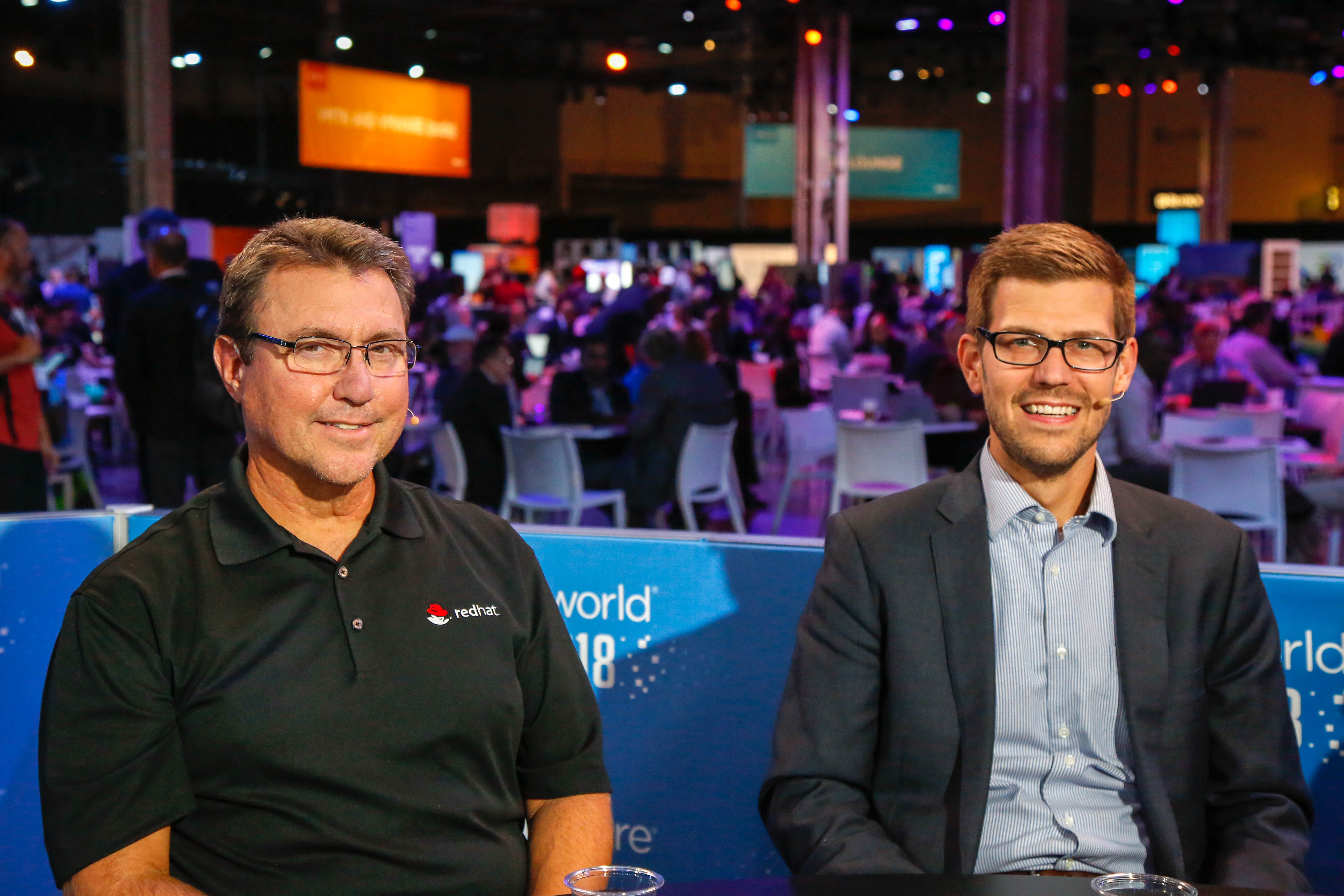 CLOUD
CLOUD
 CLOUD
CLOUD
 CLOUD
CLOUD
For all the buzz around open-source technologies, they can be a hot mess for enterprises to actually put into production. Red Hat Inc. stands out in the industry for its success in profitably slinging open source to customers in managed packages. Can the hatter bring multicloud under its roof and make it doable for enterprises in the same manner?
Consumable open-source ought to be delivered with a side of community influence and customer support, according to James Labocki (pictured, right), director of product management at Red Hat. “It’s easy just to say, ‘Hey, we do open source.’ But actually providing that life cycle around it is a whole other story,” he said.
Labocki and Rob Young (pictured, left), manager of virtualization product and strategy at Red Hat, spoke with Stu Miniman (@stu), host of theCUBE, SiliconANGLE Media’s mobile livestreaming studio, and guest host Justin Warren (@jpwarren), chief analyst at PivotNine Pty Ltd, during the VMworld conference in Las Vegas, Nevada. They discussed Red Hat’s latest open-source endeavors in containers and Kubernetes, as well as its approach to multicloud. (* Disclosure below.)
Open-source and Linux open-source operating systems (and particularly containers, a virtualized method for running distributed applications) are driving a large portion of innovation taking place today, according to Labocki. Large numbers of containers can be tough to manage on top of everything else information technology departments juggle.
“One of the interesting trends we’re seeing is that as people are beginning to adopt containers, they’re also beginning to realize that they’re looking to simplify their environments as they do that,” Labocki said.
One means they may turn to is the Kernel-based Virtual Machine — virtualization infrastructure for the Linux kernel that turns it into a hypervisor. “We’re seeing reinvigoration of the ecosystem around KVM with partners of ours like Trilio, Maxta, Veeam, and so on and so forth,” Labocki stated.
Customers are considering using KVM to help orchestrate containers and virtual machines with the Kubernetes container orchestration platform across on-premise and cloud environments, he added.
The Red Hat Management Console provided with the CloudForms open hybrid cloud-management framework allows users to span heterogeneous environments, Young explained. “Our approach is not only do we allow the deployment there, but also the management of that as well,” he said.
Red Hat acquired the CoreOS Tectonic Kubernetes platform to help flesh out its multicloud story. Rather than one piece to a solution they have to hobble together, “We want people to see Red Hat as a platform to stabilize on,” Young concluded.
Watch the complete video interview below, and be sure to check out more of SiliconANGLE’s and theCUBE’s coverage of the VMworld conference. (* Disclosure: Red Hat Inc. sponsored this segment, with additional broadcast sponsorship from VMware Inc. Red Hat, VMware, and other sponsors do not have editorial control over content on theCUBE or SiliconANGLE.)
Support our mission to keep content open and free by engaging with theCUBE community. Join theCUBE’s Alumni Trust Network, where technology leaders connect, share intelligence and create opportunities.
Founded by tech visionaries John Furrier and Dave Vellante, SiliconANGLE Media has built a dynamic ecosystem of industry-leading digital media brands that reach 15+ million elite tech professionals. Our new proprietary theCUBE AI Video Cloud is breaking ground in audience interaction, leveraging theCUBEai.com neural network to help technology companies make data-driven decisions and stay at the forefront of industry conversations.